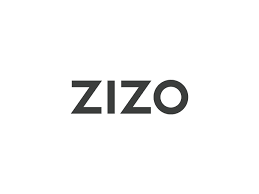DTF (Direct-to-Film) printing has quickly become one of the most reliable and profitable methods in custom apparel production. It offers versatility, durability, and vivid color reproduction on various fabrics. While printers, inks, and films often take the spotlight, one essential element that makes DTF printing truly work is DTF adhesive powder.
This invisible but powerful component is what allows your printed design to bond permanently to the fabric. Without it, your artwork would simply sit on the surface and peel off after the first wash. In this article, we’ll explore the science behind DTF adhesive powder—what it’s made of, how it works, and why choosing the right type is critical for professional results.
What Is DTF Adhesive Powder?
DTF adhesive powder, also known as DTF hot melt powder, is a thermoplastic polyurethane (TPU) material that acts as the bonding agent between the printed film and the fabric. Once the ink design is printed onto PET film, this powder is sprinkled over the wet ink layer. When heated, it melts and fuses the ink layer to the fabric during pressing.
In essence, DTF adhesive powder is the “glue” that holds the design to the garment—but it does much more than just sticking things together. It plays a major role in the print’s flexibility, durability, and texture.
The Chemistry Behind DTF Adhesive Powder
DTF adhesive powder is typically composed of thermoplastic polyurethane (TPU), a polymer known for its flexibility, strength, and resistance to wear. TPU has both hard and soft molecular segments, giving it a unique combination of elasticity and toughness.
When the powder is exposed to heat (usually between 150°C and 170°C), it undergoes a phase change:
-
It melts into a semi-liquid state.
-
It seeps into the fibers of the fabric.
-
As it cools, it solidifies and locks the printed ink into the textile structure.
This process ensures the design becomes part of the fabric, rather than sitting on top. That’s why prints with quality DTF adhesive powder resist cracking, fading, and peeling even after dozens of washes.
Why DTF Adhesive Powder Is So Important
Without adhesive powder, the DTF printing process simply doesn’t work. But beyond that, the quality and type of DTF adhesive powder directly impact several crucial performance factors:
1. Durability
High-quality powders form strong bonds that withstand stretching, washing, and regular wear. Lower-quality powders may create weak adhesion, causing edges to lift or designs to fade over time.
2. Soft Hand Feel
A smooth, flexible print depends on using fine, consistent powder. Inferior powders often feel rough or rubbery, reducing the comfort of the garment.
3. Color Vibrancy
The powder influences how evenly the heat is distributed across the ink layer. Uneven melting can cause patchy colors or dull finishes.
4. Fabric Compatibility
Different powders are optimized for various materials such as cotton, polyester, blends, and nylon. Using the wrong powder can lead to poor bonding or discoloration.
5. Wash Resistance
Properly melted TPU powder ensures that prints remain intact through multiple washing cycles. This is key for commercial-grade apparel.
Types of DTF Adhesive Powder
There isn’t a one-size-fits-all adhesive powder for DTF printing. Depending on your workflow and fabric type, you’ll want to choose between different grades and formulations.
1. Fine Powder (75–100 microns)
Best for detailed prints with intricate designs or small text. The fine granules melt evenly and produce a smooth finish.
Best for: Cotton, blended fabrics, and lightweight garments.
2. Medium Powder (100–150 microns)
A versatile choice that balances adhesion strength and texture. It’s widely used in standard apparel printing.
Best for: Cotton-polyester blends and fashion tees.
3. Coarse Powder (150–200 microns)
Designed for thicker or more textured fabrics that require deeper penetration. It creates strong adhesion but may feel slightly heavier.
Best for: Hoodies, canvas bags, denim, and heavy cotton.
How to Apply DTF Adhesive Powder Correctly
Applying the powder evenly is critical to achieving smooth, durable transfers. Follow these steps to ensure consistent results:
-
Print the Design on PET Film: Make sure to mirror the image and print in CMYK + White.
-
Apply Adhesive Powder: While the ink is still wet, sprinkle the powder evenly across the design.
-
Shake Off Excess: Gently shake or tap the film to remove any loose powder.
-
Cure the Powder: Preheat the printed film at around 150°C for 2–3 minutes until the powder becomes glossy and semi-transparent.
-
Transfer to Fabric: Place the film on the garment and press using a heat press at 160°C for 15 seconds.
-
Peel & Finish: Peel the film (hot or cold, depending on your film type) and repress for 5 seconds for a smooth finish.
Common Problems and Solutions
Even experienced printers sometimes encounter issues during the DTF process. Here are some common adhesive powder problems and how to fix them:
| Problem | Cause | Solution |
|---|---|---|
| Design not sticking | Insufficient heat or wrong temperature | Increase press time or heat to 160–165°C |
| Powder clumping | Humidity or improper storage | Store in airtight containers at room temperature |
| Rough texture | Too much powder applied | Use less powder or finer granules |
| Peeling after wash | Low-quality powder | Upgrade to premium TPU adhesive powder |
| Uneven bonding | Inconsistent heat or uneven application | Ensure even coverage and consistent curing |
By understanding the root causes, you can maintain high production standards and reduce waste.
Tips for Storing and Handling Adhesive Powder
-
Keep it dry: Moisture is the biggest enemy of adhesive powder. Always store it in airtight containers.
-
Avoid direct sunlight: Heat and light can degrade the powder’s molecular stability.
-
Use quickly after opening: Once exposed to air, powders start absorbing moisture, reducing efficiency.
-
Label containers: Keep track of batch numbers and expiration dates to ensure consistent results.
Proper handling ensures every print retains the same durability and softness that your customers expect.
How to Choose the Right DTF Adhesive Powder
When selecting a powder for your workflow, consider these key factors:
-
Fabric Type: Use soft, fine powders for light fabrics and medium to coarse powders for thick ones.
-
Curing Temperature: Check your printer and heat press specs—some powders are formulated for lower melting points.
-
Wash Durability: Always test your powder on sample prints before committing to large runs.
-
Color of the Fabric: Clear powders are ideal for light garments, while white powders prevent dark inks from bleeding on darker fabrics.
-
Supplier Quality: Work with trusted brands known for consistent granule size and purity.
Eco-Friendly Developments in DTF Adhesive Powder
Sustainability is becoming a focus in the printing industry. Manufacturers are developing eco-friendly TPU powders that are non-toxic, biodegradable, and safe for skin contact. These powders maintain strong adhesion while minimizing environmental impact—a growing priority for modern printing businesses.
If your brand values green production, look for powders certified under OEKO-TEX or similar safety standards.
The Bottom Line
DTF adhesive powder may be small in size, but it plays a massive role in the success of every transfer. By understanding its chemical behavior, handling it properly, and choosing the right formulation for your fabric, you can achieve professional, long-lasting prints that look and feel premium.
Whether you’re printing fashion apparel, uniforms, or promotional items, investing in quality DTF adhesive powder ensures your designs stay sharp, flexible, and durable—wash after wash.







